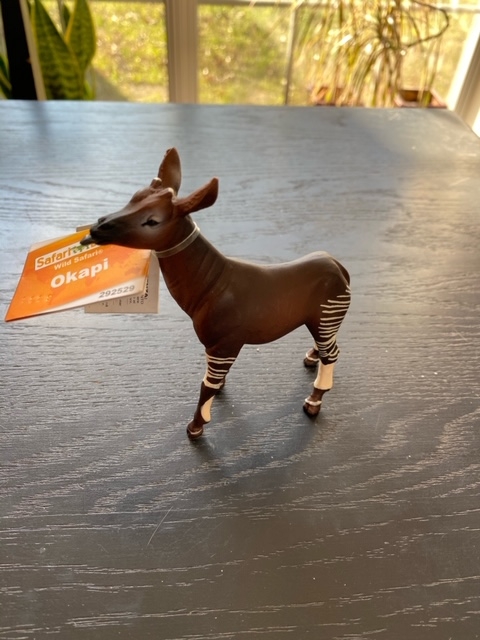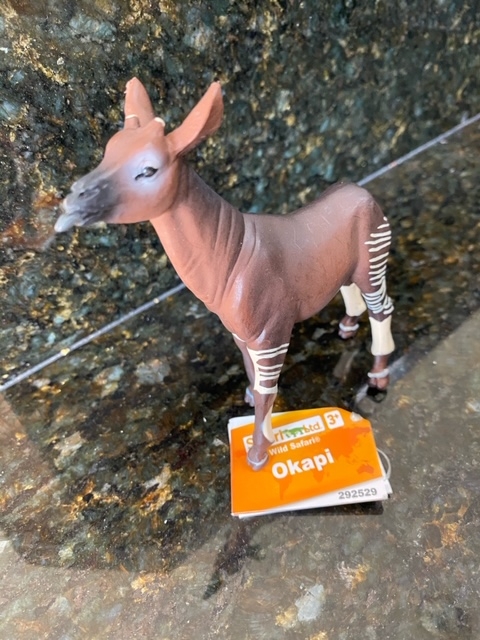There are so many cool animals to see at Walt Disney World! In Animal Kingdom, between the walking trails, the exhibits, and Kilimanjaro Safaris – the number of birds, reptiles, fish, and mammals guests can see and, more importantly, learn about is amazing. Today I want to share with you some fun facts about one of the cutest and most bashful animals you can find in Animal Kingdom – The Okapi.
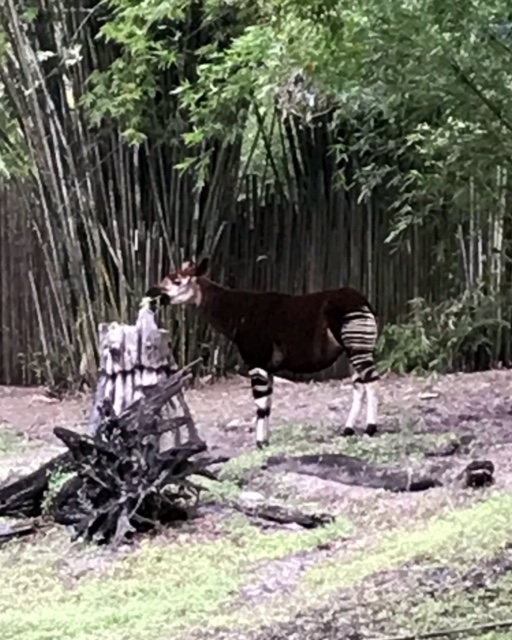
Watch for Okapis – Disney’s Animal Kingdom
Okapis are shy. So shy, in fact, that their existence remained nothing but a rumor (like unicorns) until around 1901! They hide from their only predators, leopards and humans, and would live peacefully and very happily alone, but are now considered endangered due to hunting, mining, and deforestation.

Okapis are often called “forest giraffes” and indeed, they are the only living relative of the more popular and well-known giraffe. While giraffes live on the African savanna, okapis spend their lives in the dense rainforests of the Democratic Republic of Congo. Both animals have long, dark tongues and love to dine on local vegetation. Both have long necks (although the giraffes’ are much longer) and the males of both species have ossicones (short, skin-covered horns on their foreheads). Also, both species walk the same way – both feet on one side step forward at the same time. Aside from those similarities, okapis have a unique look all their own.
Okapis in the Wild
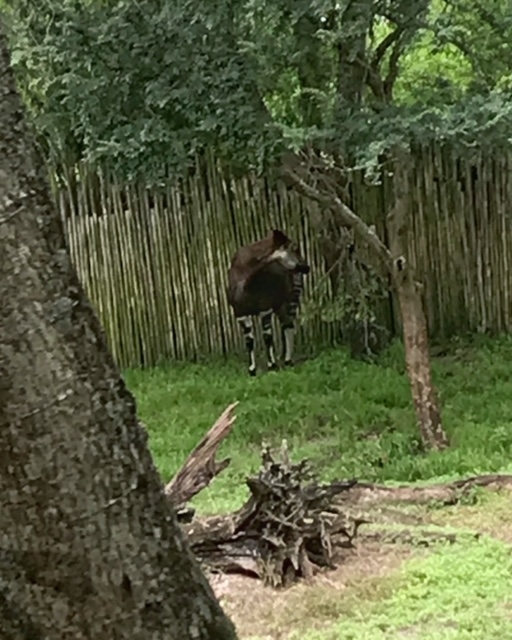
Okapis live solitary lives and only occasionally graze and play together in small numbers. Their bodies have dark brown fur and their legs are striped like zebras. This allows them to blend in well among the plants of the rain forest. With lighter-colored faces and large ears, okapis are completely adorable! Those dark-colored tongues are 14-18 inches long which means that okapis can lick their own ears and eyelids! Male and female okapis stand about 5 feet tall but the females grow a bit larger (495-770 lbs.) than males (440-660 lbs.). Adult okapis eat between 45 and 60 pounds of vegetation a day! They live between 20 and 30 years.
When a mother okapi gives birth (after a 14-16 month-long pregnancy), she has a single calf that stays in a “nest” on the ground for the first 6-9 weeks. This helps to the baby safe from leopards. The mother okapi communicates with her calf using an infrasonic call (at around 14HZ) which is too low for humans to hear.
Okapis are territorial animals with males having larger home areas than females. Okapis produce a sticky, smelly tar-like substance from scent glands on their feet and use it to mark their territory. When I see an okapi in Animal Kingdom, it’s easy to imagine them happily spending their days munching on leaves, fungi and fruit in the forest.
Okapis in Disney’s Animal Kingdom
Disney is a leader in animal conservation and is recognized by the Association of Zoos and Aquariums for its okapi conservation efforts. In October 2018 Animal Kingdom’s okapis, Zelda and Mandazi, welcomed a baby – helping to boost the world’s okapi population.
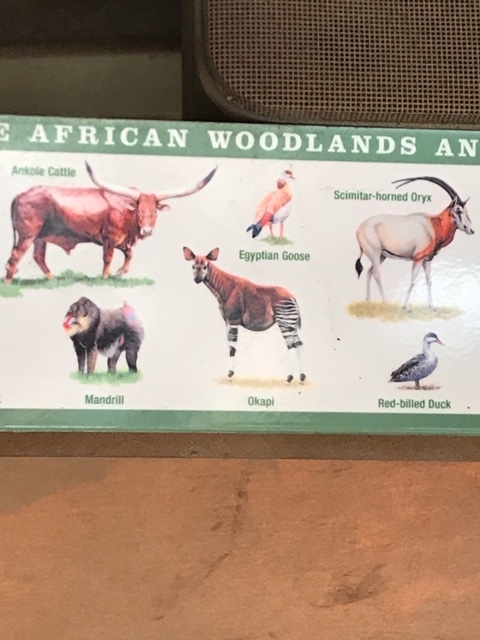
If you’re headed to Disney’s Animal Kingdom, be sure to look for okapis on Kilimanjaro Safaris and on the Gorilla Falls Exploration Trail. If, like me, you love them and can’t get enough, you can purchase your very own okapi and take it home with you. (I found mine in Mombasa Marketplace.)
What’s your favorite animal at Walt Disney World?

